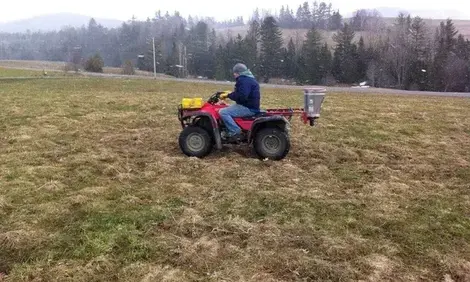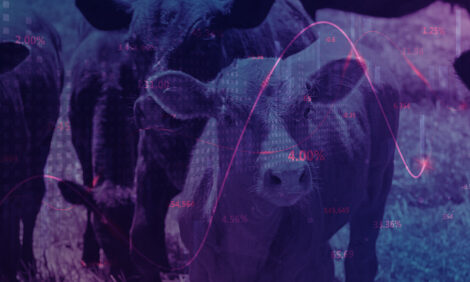



Prefeedlot respiratory vaccination improves cattle health and growth outcomes
A new review in Applied Animal Science shows that better timing of bovine respiratory disease vaccinations in young beef calves could dramatically reduce illness throughout the entire industryBovine respiratory disease (BRD) remains a leading cause of morbidity and mortality in the US beef industry, imposing significant economic and operational burdens on cattle producers, veterinarians, and other industry professionals. Vaccines are a powerful tool for reducing illness and death from BRD. However, even with significant progress in vaccine development, widespread availability, and easy access, the incidence of BRD has remained stubbornly high over the past few decades.
To address this challenge, researchers consolidated what the latest science has to say on current BRD vaccination practices and protocols during the cow-calf production phase. Their new review article, published in Applied Animal Science, identifies potential management practices—in particular vaccine timing—that could improve calf health and performance across the industry.
“The authors do a great job summarizing relevant literature and point out potential deficiencies in data and where research should be focused,” said Daniel Rivera, PhD, guest editor in chief of the special issue and associate editor of Applied Animal Science.
The review’s lead author, Kelsey M. Harvey, PhD, PAS, of the Mississippi State University Prairie Research Unit at Prairie, Mississippi, USA, explained, “The BRD complex is a systemic problem within the US beef industry and is often the result of management practices shifting the burden of control to the next sector of production.”
Current vaccination programs are fragmented
The study found that current vaccination strategies are fragmented across production phases, with insufficient coordination between cow-calf operations and subsequent sectors, limiting the overall effectiveness of BRD prevention efforts.
Harvey and her team analyzed the latest peer-reviewed research literature on the topic, finding that only 57.5% of cow-calf producers (representing 72.8% of the total calves in the United States) vaccinate calves against respiratory disease before or at weaning, despite the cow-calf phase representing the foundation for cattle health in all subsequent production sectors.
Vaccination is about timing
“By optimizing vaccination timing during the cow-calf phase—when producers have the greatest control over factors that influence long-term cattle health—the industry could significantly reduce both the $25 million spent annually on BRD treatment costs and the $126 million lost to animal deaths, while improving overall cattle performance and well-being and carcass quality throughout the production system," said Harvey.
The comprehensive review examined vaccination strategies across three critical phases of cattle development: maternal vaccination during pregnancy, early calf vaccination from birth through branding (60–120 days of age), and vaccination timing around weaning (approximately 205 days).
“We analyzed existing studies on both modified-live and killed vaccine formulations against major respiratory pathogens,” said Harvey, “including bovine herpesvirus, bovine viral diarrhea virus, bovine respiratory syncytial virus, and parainfluenza virus, as well as bacterial pathogens like Mannheimia haemolytica.”
The analysis specifically focused on how vaccination timing relative to stressful events—such as weaning, transportation, and feedlot entry—affects vaccine efficacy and cattle health outcomes.
Innovative vaccination approaches
The review also highlighted what the literature has to say on innovative approaches, such as intranasal vaccination, to overcome maternal antibody interference and preconditioning programs that separate vaccination from high-stress periods to optimize immune response and reduce disease incidence throughout the production cycle.
While additional research is needed to evaluate cow-calf management interventions on feeder cattle outcomes, this review demonstrates the potential to maximize BRD vaccine effectiveness through strategic timing during early production phases, ultimately improving cattle health and performance throughout the beef supply chain.
The article appears in the August special issue of Applied Animal Science, which showcases previous management and health effects on beef cattle finishing performance.


